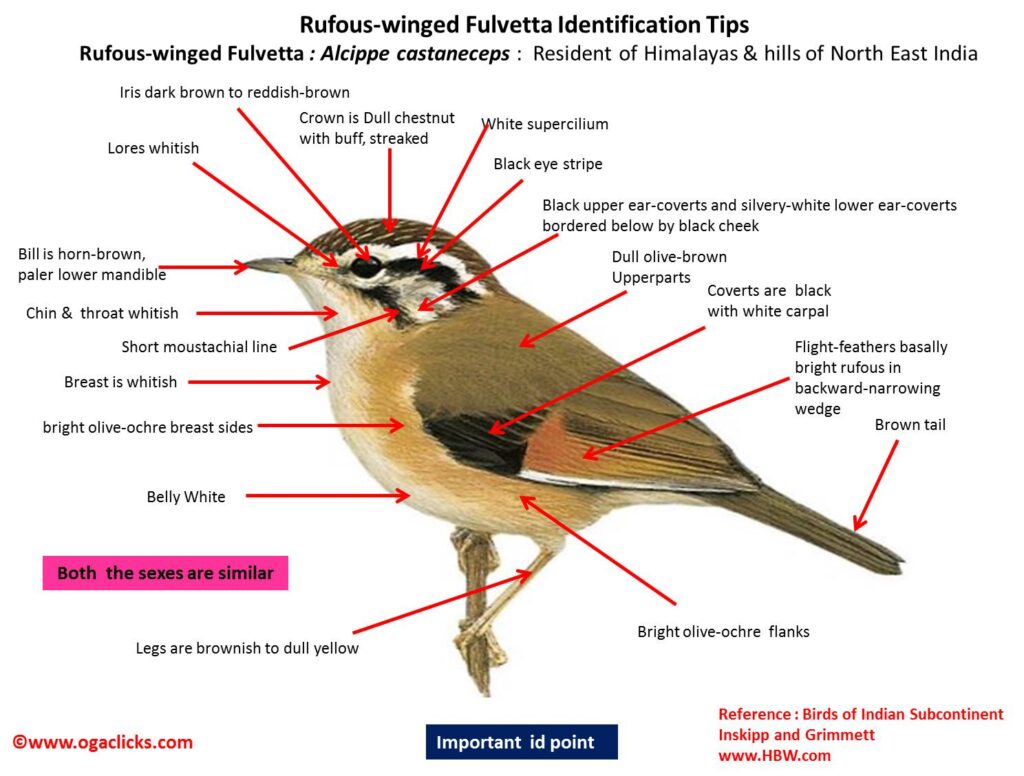
Rufous-winged Fulvetta Alcippe castaneceps
Etymology:
- Alcippe : Greek Mythology -Alcippe, daughter of Aries the god of war.
- Castaneceps : Latin word castaneus chestnut coloured ; ceps -headed
Distribution in India: Resident of Himalayas and North East Indian hills.
Description: Size of 9-10 cm; wt. of 8–12 g.. It is a very small olive-brown and whitish babbler with pale-streaked dark chestnut crown, black-and-white face, and black and chestnut panels in wing. The nominate race has crown dull chestnut with buff shaft streaks, upperparts dull olive-brown, upperwing and tail browner, greater wing-coverts and primary coverts black with white carpal, flight-feathers basally bright rufous in backward-narrowing wedge; long white supercilium, black upper ear-coverts and silvery-white lower ear-coverts bordered below by black cheek and short moustachial line; chin to belly whitish, submoustachial area, neck side, breast side, flanks, thighs and vent bright olive-ochre; iris dark brown to reddish-brown; bill horn-brown, paler lower mandible; legs brownish to dull yellow. The juvenile has duller, paler crown than adult, more olive-ochre on underparts, generally across breast and belly.
Habitat:It is found in broadleaf evergreen forest, secondary forest, forest edge, bamboo, abandoned clearings. Found at 300 m–3600 m.
Food Habits: It eats insects and tree sap. It is found in large flocks; sometimes forms core of mixed-species foraging flocks, which may contain other babblers. The flocks move very quickly. It climbs about moss-covered and lichen-covered trunks.
Breeding Habits: They breed in Apr-Jul in India. The nest is built by both sexes. The nest is a dome made of green moss, dry bamboo or other leaves, and fine roots, lined with fine grasses, stalks, fibers, dry leaves, rootlets and tendrils, placed among moss or creepers on tree trunk, in bush or sapling, on sloping moss-covered or fern-covered bank or snugly hidden in clump of ferns or orchid above ground . They lay a clutch of 3-4 eggs. The incubation is done by both parents for a period of 2 weeks. The fledging period is 2 weeks. The young fed by both parents.